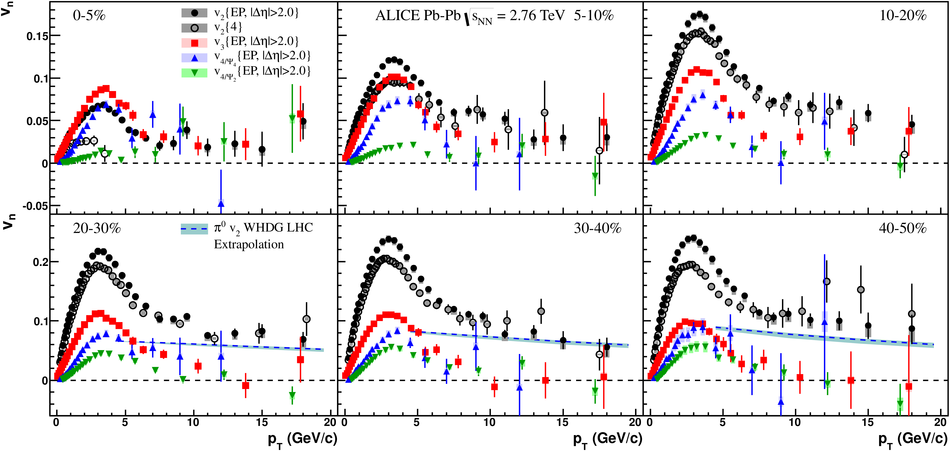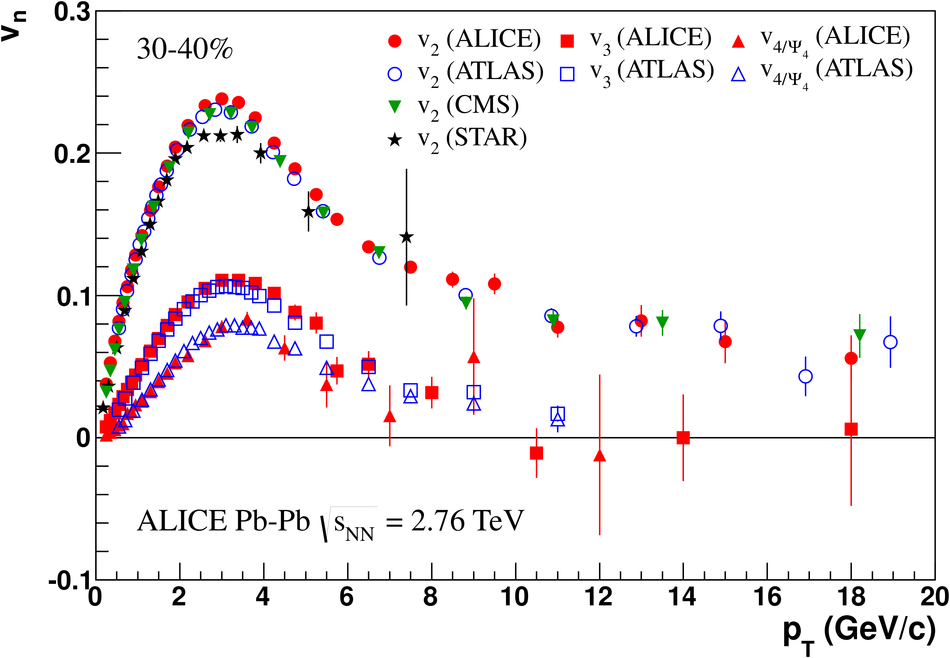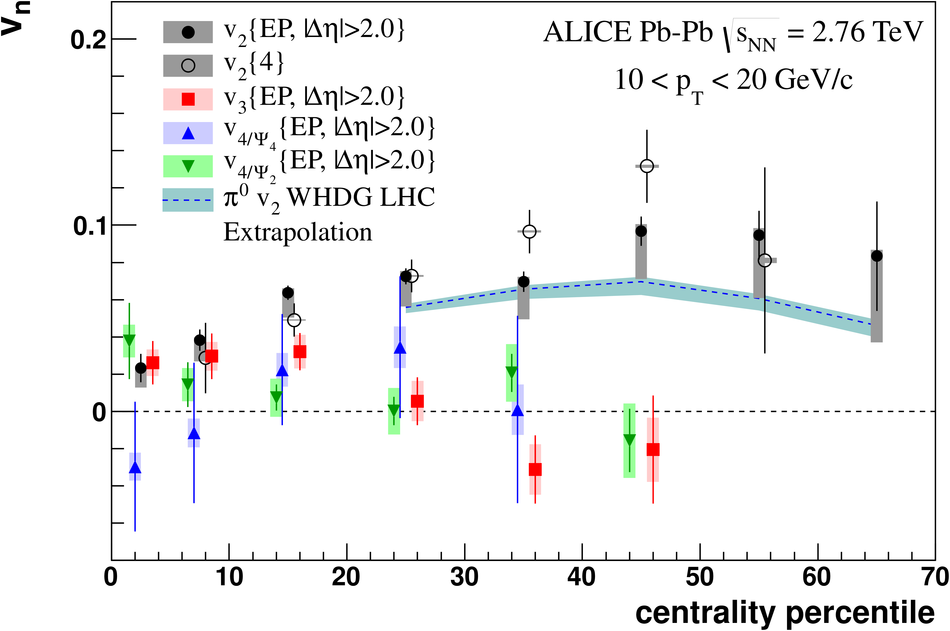The elliptic, $v_2$, triangular, $v_3$, and quadrangular, $v_4$, azimuthal anisotropic flow coefficients are measured for unidentified charged particles, pions and (anti-)protons in Pb-Pb collisions at $\snn = 2.76$ TeV with the ALICE detector at the Large Hadron Collider. Results obtained with the event plane and four-particle cumulant methods are reported for the pseudo-rapidity range $|\eta|< 0.8$ at different collision centralities and as a function of transverse momentum, $\pt$, out to $\pt=20$ GeV/$c$. The observed non-zero elliptic and triangular flow depends only weakly on transverse momentum for $\pt>8$ GeV/$c$. The small $\pt$ dependence of the difference between elliptic flow results obtained from the event plane and four-particle cumulant methods suggests a common origin of flow fluctuations up to $\pt=8$ GeV/$c$. The magnitude of the (anti-)proton elliptic and triangular flow is larger than that of pions out to at least $\pt=8$ GeV/$c$ indicating that the particle type dependence persists out to high $\pt$.
Phys. Lett. B 719 (2013) 18
HEP Data
e-Print: arXiv:1205.5761 | PDF | inSPIRE
CERN-PH-EP-2012-142





